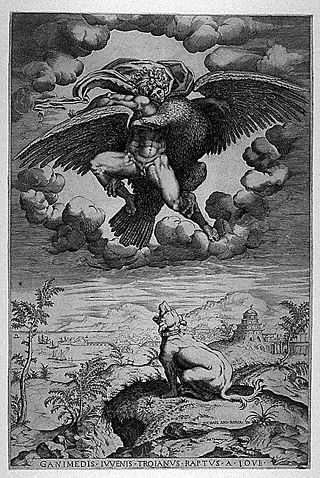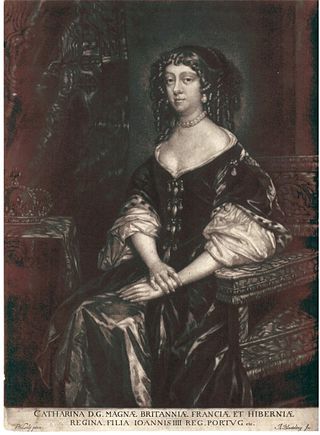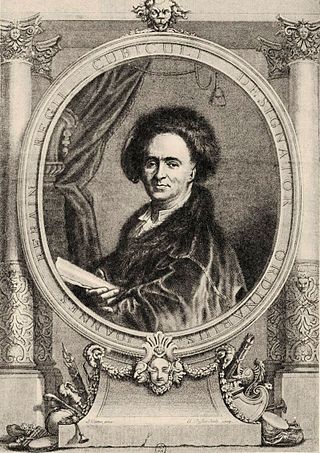
Cherubino Alberti (1553–1615), also called Borghegiano, was an Italian engraver and painter. He is most often remembered for the Roman frescoes completed with his brother Giovanni Alberti during the papacy of Clement VIII. He was most prolific as an engraver of copper plates.
Events from the year 1651 in art.

Martino Rota, also Martin Rota and Martin Rota Kolunić was an artist, now mainly known for his printmaking, from Dalmatia.

Auguste Gaspard Louis, Baron Boucher-Desnoyers, was one of the most eminent of modern French engravers.

Charles Audran (1594–1674) was a French engraver.

Nicolas Béatrizet was a 16th century French engraver, working in Rome.

Jacques Firmin Beauvarlet, a celebrated engraver, was born at Abbeville in 1731. He went to Paris when young, and was instructed in the art by Charles Dupuis and Laurent Cars. His first manner was bold and free, and his plates in that style are preferred by some to the more finished and highly-wrought prints that he afterwards produced, although it must be confessed that the latter are executed with great neatness and delicacy. Beauvarlet married, in 1761, Catherine Jeanne Françoise Deschamps, a young lady who possessed some skill in engraving, but who died in 1769 at the age of thirty-one. He married again in 1770, but became for a second time a widower in 1779. Eight years later, in 1787, he married Marie Catherine Riollet, who, like his first wife, was an engraver. She was born in Paris in 1755, and is said to have died in 1788. Beauvarlet himself died in Paris in 1797.

Frederik Bloemaert was a Dutch printmaker and draftsman.

Abraham Blooteling (1634–1690) was a Dutch designer and engraver.

Schelte a Bolswert (1586–1659) was a leading Dutch engraver, noted for his works after Rubens and Van Dyck.

Jean Boulanger, a French line-engraver, son of the painter Olivier Boulanger and cousin to the painter of the same name, was born at Amiens in 1608 and baptized in Troyes in Champagne on 24 January 1608; he had five children with Marie Judon. He was documented in Paris in 1645 and resided in the parish of Saint-Etienne-du-Mont.
Jan van Bunnik (1654–1727) was a Dutch Golden Age landscape painter.

Guillaume Chasteau (1635–1683) was a French engraver.

Étienne Delaune, Delaulne, or De Laune, was a French goldsmith, medallist, draughtsman and engraver.

Claude Duflos (1665–1727) was a French engraver.

Étienne Fessard, a French engraver, was born in Paris in 1714. He was a pupil of Edme Jeaurat, and proved an artist of sufficient merit to be accepted for candidacy (agréé) at the Académie royale de peinture et de sculpture (1753). A protegé of le comte de Caylus, whom he may have assisted in the development of skill in etching, Fessard received the appointment Engraver of the King's Library in 1756, with responsibility for the engravings of the royal collection of paintings and drawings, as a result of Caylus' influence. On his death in 1777, the position was given to his student Augustin de Saint-Aubin. Fessard executed a considerable number of plates, but his efforts to resume the engraving of the King's paintings did not obtain the support of the Acadmie royale and resulted in only two plates: "Feste Flamande" after Rubens and "L'Empire de Flore" after Poussin.
Jacob Folkema, a Dutch designer and engraver, was born and died at Dokkum, in Friesland. He was first instructed by his father, Johann Jakob Folkema, a goldsmith, and studied afterwards under B. Picart at Amsterdam. During that time he worked for Royaumont's Bible, 1712, and Ruysch's Anatomy, 1737. Folkema was also an excellent engraver in mezzotint. He had a sister, Anna Folkema, who painted miniatures, assisted her brother, and engraved some few plates. She was born in 1695, and died in 1768. By Jakob Folkema there are, among others, the following plates:

François Poilly, or François de Poilly, was a French engraver.

Cornelis Galle the Elder, a younger son of Philip Galle, was born at Antwerp in 1576, and was taught engraving by his father. He followed the example of his brother Theodoor in visiting Rome, where he resided for several years and acquired a correctness of design and a freedom of execution in which he greatly surpassed both his father and his brother. After engraving several plates at Rome, he returned to Antwerp, where he carried on the business of a printseller and engraved many plates after the works of his countrymen and his own designs. He became a master of the Antwerp Guild of St Luke in 1610. One of his pupils was Giovanni Florimi of Siena.
The Audran family was a French family of engravers and painters, mainly active in Paris and Lyons. The first well-known member was Charles Audran (1594–1674).
















